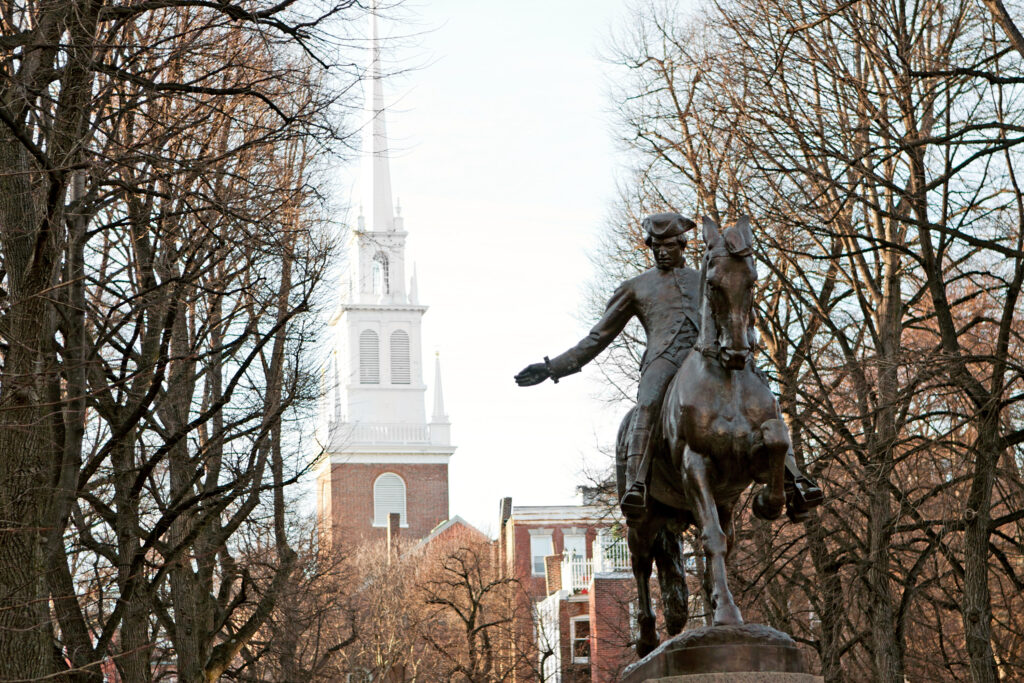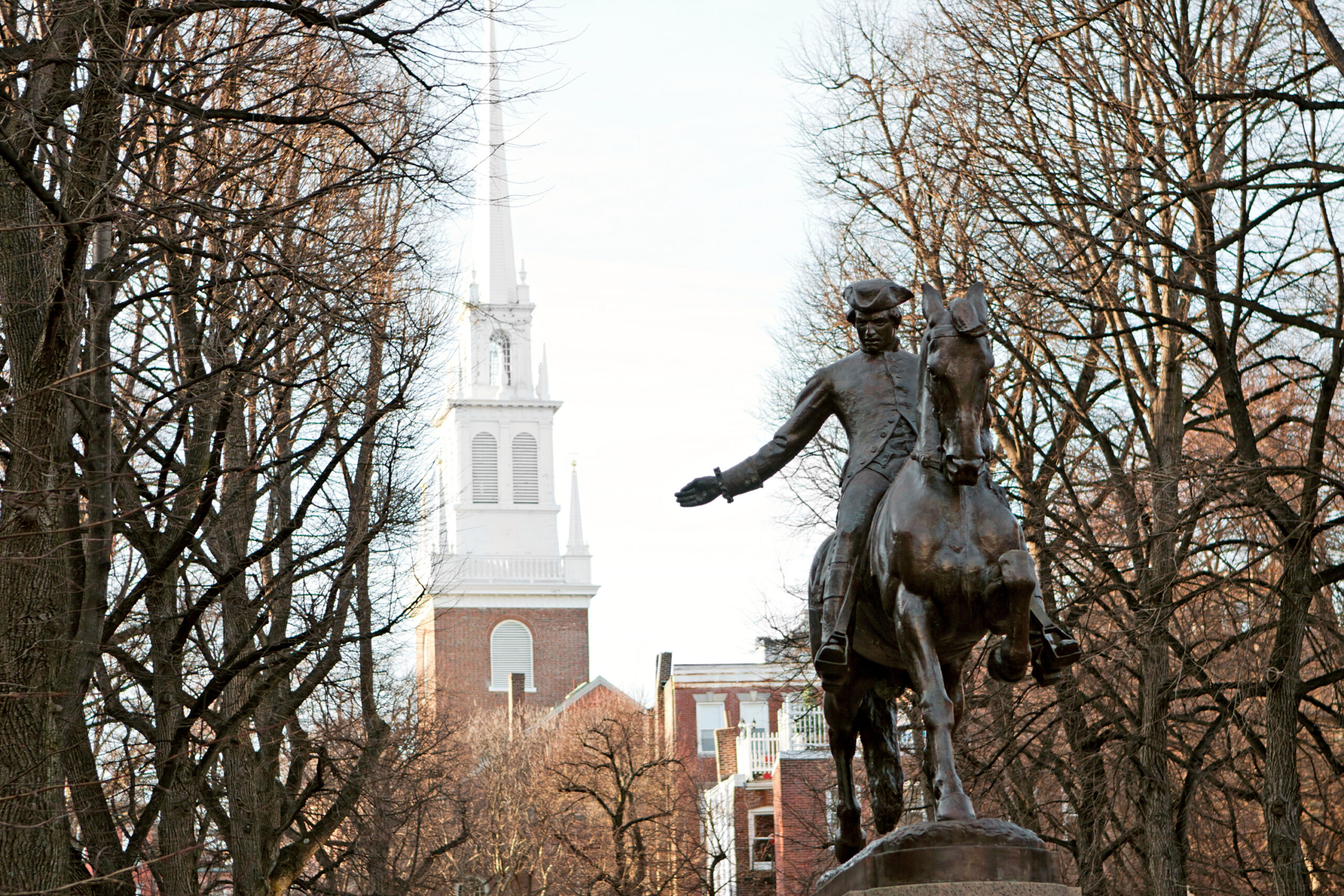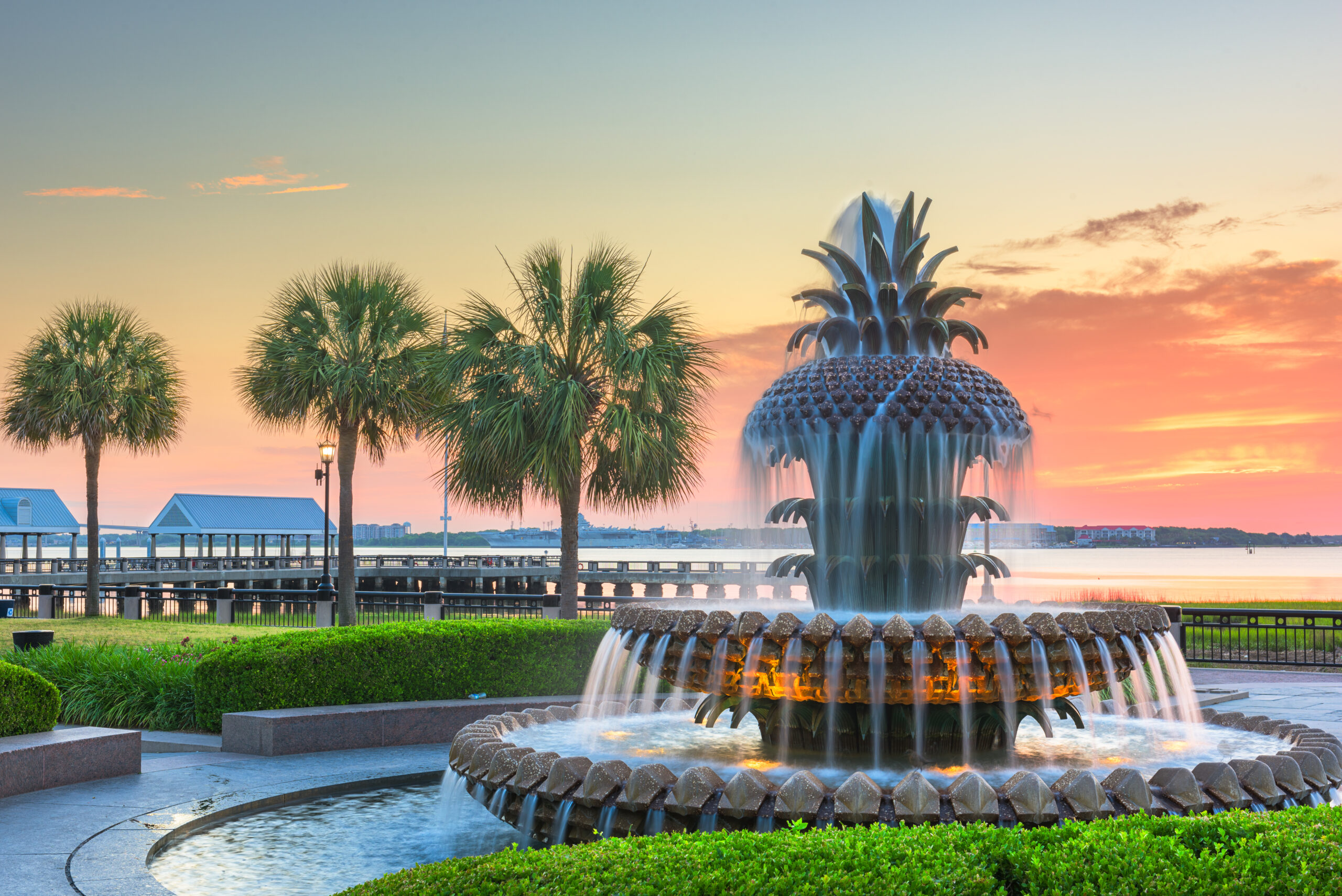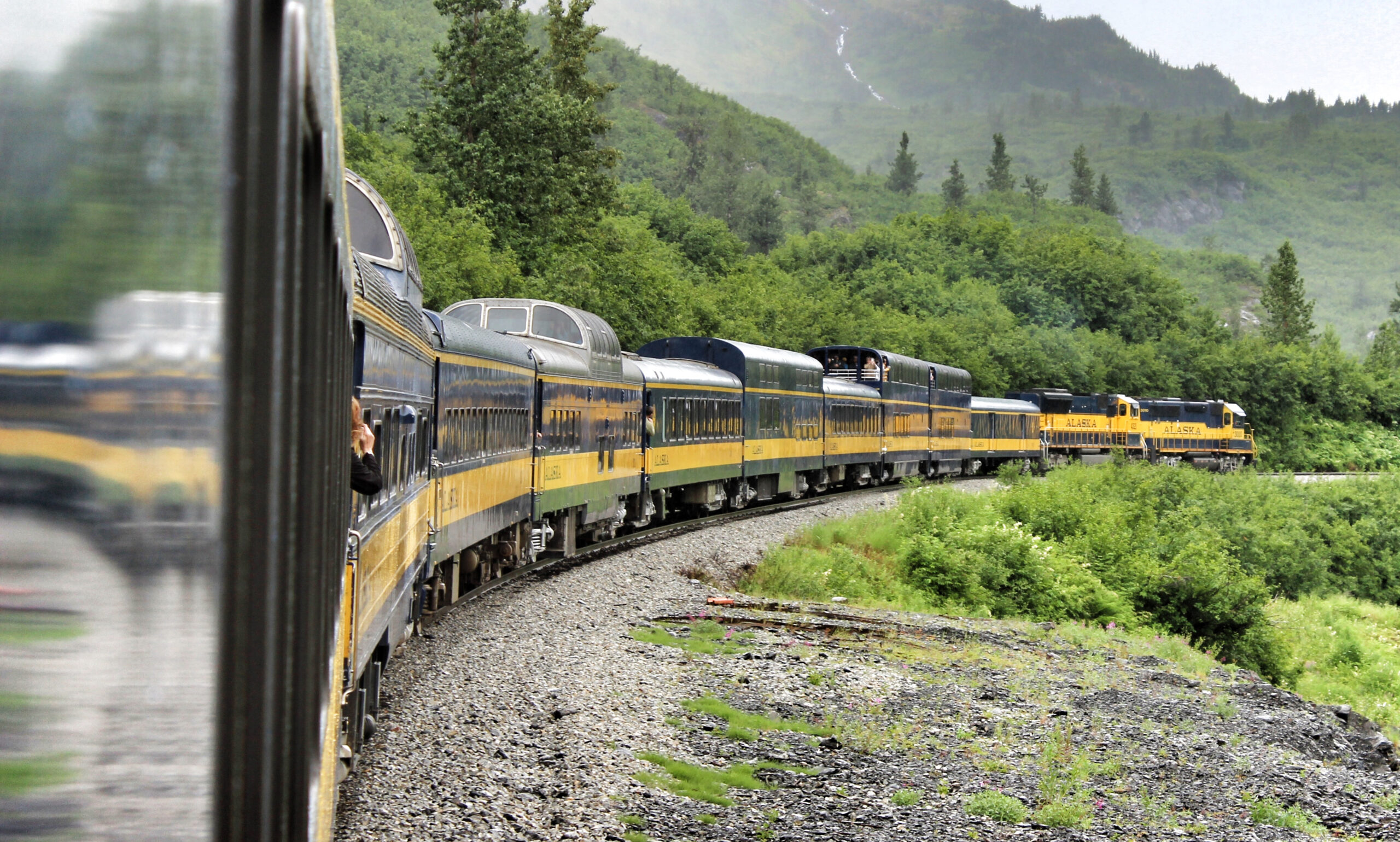We’ve all heard the phrase: “One if by land, two if by sea.” It’s etched into American memory as the defining line from Paul Revere’s legendary Midnight Ride. But what really happened on that historic night in April 1775—and how did the Old North Church become such a crucial part of it?
As you explore Boston’s Freedom Trail, the Old North Church stop is more than a beautiful landmark—it’s where signal turned into revolution. In this blog, we’ll unpack the real story behind Revere’s ride and the role this historic church played.

Colonial Boston: A City on Edge
In the years leading up to 1775, Boston was a powder keg. Tensions between the British Crown and American colonists had reached a boiling point. With British troops stationed in the city and tensions rising over taxation, trade restrictions, and military presence, revolution was no longer a distant threat—it was imminent.
The Sons of Liberty, a group of radical patriots including Paul Revere, Samuel Adams, and others, were busy organizing resistance. They feared that British troops would soon march west to seize colonial weapons stored in Concord, Massachusetts.
The colonists needed a way to spread the alarm quickly across the countryside—without British interference. That’s where the Old North Church came in.
Who Was Paul Revere, Really?
Paul Revere is often remembered as a lone hero, galloping through the night to shout warnings. But in truth, he was part of a sophisticated network of riders, messengers, and organizers.
Revere was a respected Boston silversmith, engraver, and active member of the patriot cause. On the night of April 18, 1775, he was tasked with riding to Lexington to warn Samuel Adams and John Hancock that British troops were coming to arrest them.
But Revere’s ride wasn’t the only one. William Dawes, Samuel Prescott, and several other lesser-known patriots also carried the alarm across the countryside in a coordinated effort.
The Signal Plan: Old North Church’s Critical Role
Revere knew that British troops might try to block the roads, so he devised a backup plan. If he couldn’t reach riders across the Charles River in time, a signal would light the sky from the tallest point in Boston: the Old North Church steeple.
The plan was simple yet brilliant:
- One lantern in the steeple would signal that troops were marching by land through Boston Neck.
- Two lanterns meant they were coming by sea, crossing the Charles River to Cambridge.
On that night, two lanterns were indeed hung in the steeple, signaling that British troops were taking the water route. This signal alerted patriots in Charlestown to begin their part of the relay, ensuring the warning spread even if Revere didn’t make it far.
The brave men who placed the lanterns—Robert Newman (the church sexton) and John Pulling Jr.—risked imprisonment or worse for their part in the rebellion. They had to sneak into the church under cover of darkness, climb the narrow staircase to the bell tower, and hang the lights while evading British patrols.
Setting the Record Straight: What the Poem Got Wrong
Much of what Americans “know” about Paul Revere’s ride comes from Henry Wadsworth Longfellow’s 1861 poem “Paul Revere’s Ride.” While the poem was instrumental in turning Revere into a national folk hero, it’s also full of historical inaccuracies.
Longfellow describes Revere as the sole rider who warned the countryside—but in reality, he was one of many. He also suggests that Revere was the one who hung the lanterns in the steeple—but he was already en route by boat when the signal was sent.
Moreover, Revere never reached Concord. He was captured by British patrols outside Lexington and detained briefly before being released. It was Dr. Samuel Prescott who successfully continued the ride to Concord.
Visiting the Old North Church Today
Walking into Old North Church today is like stepping back into the heart of revolutionary history. Built in 1723, it’s the oldest surviving church building in Boston and a beautifully preserved example of Georgian architecture.
Inside, visitors can see:
- The original pews and pulpit, still arranged as they were in Revere’s time.
- A replica of the two lanterns that hung in the steeple.
- Exhibits and guided interpretations that bring the story of that fateful night to life.
From its narrow, creaky stairs to its soaring steeple, the church is a physical reminder of the quiet courage that helped spark a revolution.
The Power of a Signal: Why This Moment Still Matters
The lantern signal wasn’t just a clever trick—it was a turning point. It represented the first coordinated communication that set the Revolution in motion. The courage it took to plan and execute that moment—without knowing what would come next—shows the strength of the patriots’ conviction.
Old North Church reminds us that revolutions often begin in silence, not shouts. Two flickering lights in the night were enough to set history in motion.
Myth vs. Reality: Setting the Story Straight
Over time, the story of Paul Revere’s ride has become legendary—but not all legends are accurate. Let’s clear up some of the biggest myths surrounding the Old North Church and that iconic night.
🔴 Myth #1: Paul Revere rode alone through the night.
✅ Reality: Paul Revere was just one of several riders. William Dawes, Samuel Prescott, and others also rode to spread the alarm. Prescott was the only one to reach Concord successfully.
🔴 Myth #2: Revere hung the lanterns himself.
✅ Reality: Revere had already left by boat when the lanterns were hung. Robert Newman and John Pulling Jr. executed the signal—a backup plan in case the riders were delayed or intercepted.
🔴 Myth #3: The signal was the primary alarm.
✅ Reality: The lanterns in the Old North Church steeple were just a secondary signal to alert patriots across the river. The central alarm was always the network of riders spreading the word on horseback.
🔴 Myth #4: Longfellow’s poem tells the full truth.
✅ Reality: While Henry Wadsworth Longfellow’s “Paul Revere’s Ride” made the story famous, it’s filled with creative license. He portrayed Revere as a lone hero to inspire patriotism, but overlooked the coordinated effort behind the warning.
These myths don’t detract from the bravery involved, but understanding the full picture helps us appreciate just how organized and committed the revolutionary network truly was.
See It for Yourself: A Self-Guided Experience
Want to hear this story as you stand in front of the Old North Church? Our Freedom Trail Self-Guided Walking Tour is the perfect way to explore Boston’s Revolutionary landmarks at your own pace. With GPS-triggered narration, offline access, and vivid storytelling, you’ll uncover the real stories behind the myths—including Paul Revere’s true role in history.
No rushed group tours, no strict schedules—just you, your phone, and the city where America began.






